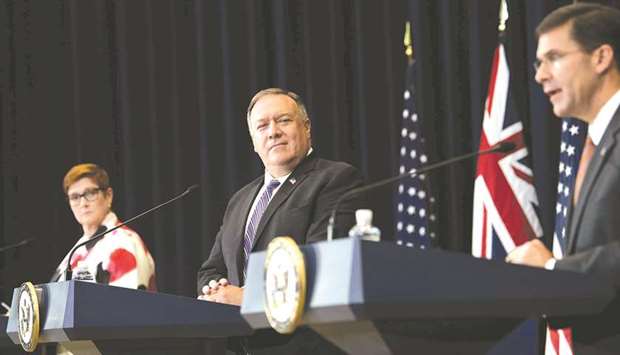“The United States knows the threats that you and the rest of the free world face. And the United States stands with you in our unbreakable alliance,” Secretary of State Mike Pompeo told the Australian ministers during a joint news conference.
US Defense Secretary Mark Esper hailed the participation of five Australian warships last week in exercises with a US carrier strike group and a Japanese destroyer in the Philippine Sea. “These exercises not only bolster interoperability, but also send a clear signal to Beijing that we will fly, we will sail and we will operate wherever international law allows and defend the rights of our allies and partners to do the same,” Esper said.
Australian Defense Minister Linda Reynolds said the two countries will build ties across a slew of defence areas including hypersonic, electronic and space-based warfare.
The co-operation will “strengthen our shared ability to contribute to regional security and to deter malign behaviour in our region,” she said.
In a joint statement, the ministers said they discussed expanding operations in the northern Australian city of Darwin, where US Marines have been rotating in since 2012 under an initiative of former president Barack Obama. The United States will establish a military fuel reserve in Darwin and the allies will consider exercises there with like-minded countries – a likely reference to Japan and India.
In one step that had been too far, Australia last year said it would not serve as a base for US intermediate-range missiles — widely seen as a way to target China.
Esper, asked if Australia had warmed to the missiles, said the allies had a “full suite of capabilities and strategies we intend to roll out together in the years ahead.”



